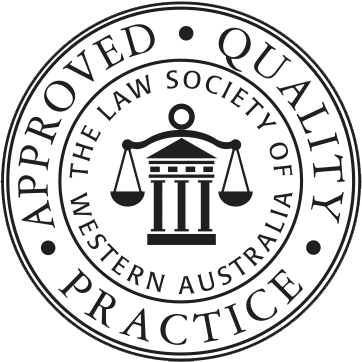Litigation Funding
60-Second Summary
Although parties to family law proceedings generally bear their own legal costs, it has long been recognised in the family law jurisdiction that often the wealth of the parties is controlled by one rather than both of them. This is usually most apparent in complex financial matters, though not limited to them.
For example, the primary breadwinner during a relationship may continue to earn an income post-separation with which to meet his or her own legal costs, whilst the primary homemaker and parent during the relationship may continue to be without an income post-separation and have little or no control over the parties’ financial resources.
In such cases it can be difficult or impossible for the latter party to meet legal fees for Court proceedings, so it might be possible to apply for what is known as a “litigation funding order.”
The purpose of a litigation funding order therefore is to “level the playing field” by ensuring that the financially weaker party has access to sufficient funds with which to participate in the proceedings, thereby ensuring the route to justice is not lost.
Applying for litigation funding
Applications for the provision of funds for litigation purposes are made by way of a Form 1 Application upon the institution of proceedings (or a Form 1A Response to Initiating Application) or by way of a Form 2 Application in a Case (or Form 2A Response) after proceedings have commenced.
Thereafter, the matter will generally be listed at an early stage for an Interim Hearing where the application for litigation funding (and any other interim orders sought) will be heard and determined by a Judicial Officer (usually a Magistrate).
Types of Litigation Funding Orders
Orders for litigation funding are not specifically referred to in the Family Law Act 1975 (or the Family Court Act 1997 for de facto couples in Western Australia). However, the respective Acts do provide for several sources of power under which the Court may make such an order, specifically:
- A partial or interim property order under Section 79 (Section 205ZG of the Family Court Act);
- A costs order under Section 117 (Section 237 of the Family Court Act); and
- Periodic or lump-sum spousal maintenance under Sections 72 and 74 (Section 205ZC of the Family Court Act).
Sections 79 and 117 (i.e. partial or interim property orders and costs orders respectively) are the most often invoked sources of power for litigation funding purposes and are those addressed for the purposes of this article. Please see our article on spousal maintenance applications for more information.
Partial or Interim Property Orders
Usually, Section 79 is relied upon to make final property orders only, however where funds are required to meet a party’s legal costs, both interim and final property orders may be sought.
It is not possible to seek interim property orders without also seeking final property orders. Furthermore, the interim property order must be capable of variation or reversal without the need to set aside the interim order.
Put simply, a threshold issue when establishing a case for an interim property order is that, upon a final hearing, the Applicant will receive an amount equal to or greater than the sum received on an interim basis. The Court will not order an interim property settlement of, for example, $100,000 if there is no assurance they will ultimately receive at-least that amount by way of final property settlement.
When considering an application under Section 79 the Court engages in a two-step process, namely:
- Whether the jurisdiction will be entertained (being a procedural step to determine whether it is appropriate that the interim order be made); and
- Consider which factors are relevant to the exercise of the jurisdiction (being the substantive step).
Cost Orders
Unlike an application made pursuant to Section 79, applications for an interim costs order are not restricted to property settlement or maintenance proceedings. Therefore, Section 117 is the appropriate source of power when making an application for litigation funding in respect of (for example) child welfare proceedings.
Furthermore, where there is (or may be) insufficient existing property for the making of a “lump-sum” costs order, the Applicant may instead apply for what is known as a “dollar-for-dollar” order. Such an order is often necessary where the Respondent is meeting his or her legal fees from their exertional income (rather than existing property, such as savings), and generally provides that the Respondent shall pay a sum equal to their monthly legal fees and disbursements to the Applicant.
One of the advantages of a costs order (vis-à-vis an interim property order) is that the funds advanced on an interim basis may remain capable of characterisation by the Judicial Officer at a final hearing, and therefore may be deemed as not forming part of the applicant’s ultimate property settlement entitlements.
An application reliant upon Section 117 does not follow the same approach as an application under Section 79, but must instead address the relevant criteria set out in Section 117(2A), namely:
-
- The financial circumstances of each of the parties to the proceedings;
- Whether any party to the proceedings is in receipt of legal aid;
- The conduct of the parties to the proceedings (including, among other things, whether the financially stronger party has refused to make funds available);
- Whether the proceedings were necessitated by the failure of a party to the proceedings to comply with a previous Court order; and
- Such other matters as the court considers relevant.
Although Magistrates in the Family Court jurisdiction retain a broad discretion when considering applications for litigation funding, and notwithstanding the different approaches depending upon the source of power relied upon, the following matters are of general relevance (whilst also being required to satisfy “step one” under a Section 79 application):
- A position of relative financial strength on the part of the Respondent;
- A capacity on the part of the Respondent to meet his or her own litigation costs; and
- An inability on the part of the Applicant to meet his or her own legal costs.
Additionally, the following matters are also of general relevance regardless of the particular source of power:
- The Applicant should have (at a minimum) an arguable case for substantive relief;
- There should be evidence of the Applicant’s likely costs of the litigation;
- That the Applicant’s legal representatives will not continue to act unless their costs are paid and secured on an ongoing basis (although this is not an essential pre-condition);
- Whether the matter involves complex financial issues requiring expert reports;
- That the Order makes provision for litigation expenses that is reasonable in all the circumstances;
- Whether it seems likely that the Applicant will receive by way of property settlement a sum sufficient to cover the advance;
- The parties’ financial circumstances generally; and
- The order must be just and equitable.
Importantly, and irrespective of which source of power is invoked, all of the aforementioned considerations must specifically be addressed in the Applicant’s affidavit material, including by annexing any supporting documentation which is sought to be relied upon. This may include, for example:
- A Costs Estimate from the Applicant’s solicitors evidencing the anticipated future costs of the litigation;
- A Costs Agreement evidencing the basis upon which the Applicant’s solicitors charge for legal work;
- Documents evidencing how the proposed litigation funds will be applied (that is, whether on account of retrospective or prospective legal costs);
- Identifying the assets and income of the Respondent in order to establish their ability to meet their own legal fees; and
- Identifying the source of funds from which the litigation funding can be paid.
Which source of power?
As is evident from the foregoing, it is the legislative source of power which determines the necessary preconditions and relevant considerations for making a particular order. Therefore, careful consideration should be given at an early stage as to which provisions of the Act are most appropriate in the circumstances.
When deciding upon a source of power, the Applicant must consider, among other things, the nature of the proceedings and what is hoped to be achieved, what evidence is available to support the application, and the respective financial circumstances of the parties.
Get expert advice
For further information about litigation funding, or family law matters generally, call DS Family Law on (08) 9486 1766 or complete our online enquiry form to arrange an initial consultation.
Let’s meet, and figure it out
For practical advice about what you should do next, please call to arrange a no-obligation initial consultation.

